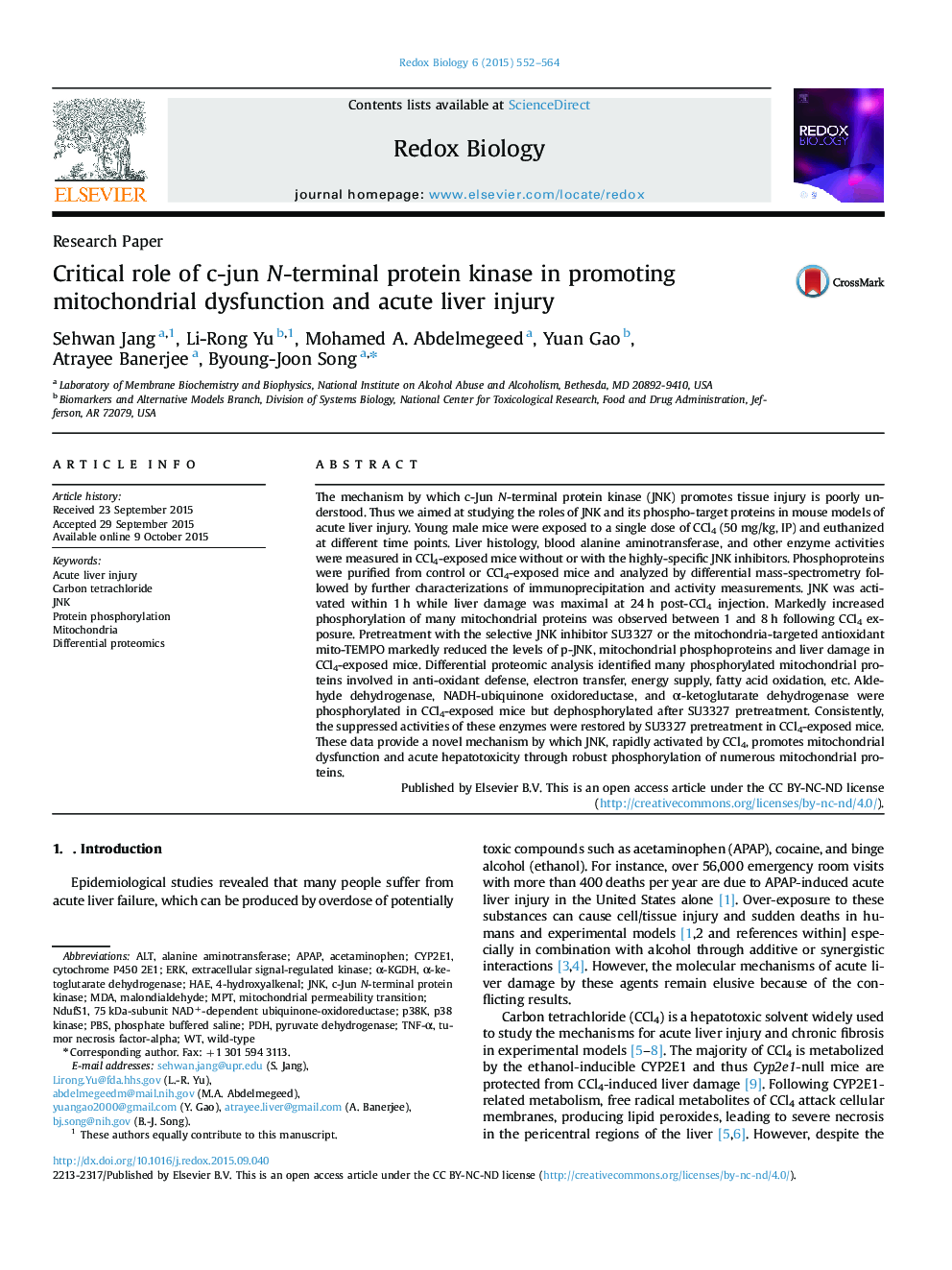| Article ID | Journal | Published Year | Pages | File Type |
|---|---|---|---|---|
| 1922949 | Redox Biology | 2015 | 13 Pages |
•JNK was rapidly activated after carbon tetrachloride (CCl4) exposure.•Activated JNK was translocated to mitochondria and phosphorylated many proteins.•Many mitochondrial phosphoproteins were identified by mass-spec analysis.•Mitochondrial ALDH2, α-KGDH, and complex I were inactivated by phosphorylation.•JNK inhibition reduced phosphorylation of mitochondrial proteins and hepatotoxicity.
The mechanism by which c-Jun N-terminal protein kinase (JNK) promotes tissue injury is poorly understood. Thus we aimed at studying the roles of JNK and its phospho-target proteins in mouse models of acute liver injury. Young male mice were exposed to a single dose of CCl4 (50 mg/kg, IP) and euthanized at different time points. Liver histology, blood alanine aminotransferase, and other enzyme activities were measured in CCl4-exposed mice without or with the highly-specific JNK inhibitors. Phosphoproteins were purified from control or CCl4-exposed mice and analyzed by differential mass-spectrometry followed by further characterizations of immunoprecipitation and activity measurements. JNK was activated within 1 h while liver damage was maximal at 24 h post-CCl4 injection. Markedly increased phosphorylation of many mitochondrial proteins was observed between 1 and 8 h following CCl4 exposure. Pretreatment with the selective JNK inhibitor SU3327 or the mitochondria-targeted antioxidant mito-TEMPO markedly reduced the levels of p-JNK, mitochondrial phosphoproteins and liver damage in CCl4-exposed mice. Differential proteomic analysis identified many phosphorylated mitochondrial proteins involved in anti-oxidant defense, electron transfer, energy supply, fatty acid oxidation, etc. Aldehyde dehydrogenase, NADH-ubiquinone oxidoreductase, and α-ketoglutarate dehydrogenase were phosphorylated in CCl4-exposed mice but dephosphorylated after SU3327 pretreatment. Consistently, the suppressed activities of these enzymes were restored by SU3327 pretreatment in CCl4-exposed mice. These data provide a novel mechanism by which JNK, rapidly activated by CCl4, promotes mitochondrial dysfunction and acute hepatotoxicity through robust phosphorylation of numerous mitochondrial proteins.
Graphical abstractFigure optionsDownload full-size imageDownload as PowerPoint slide
